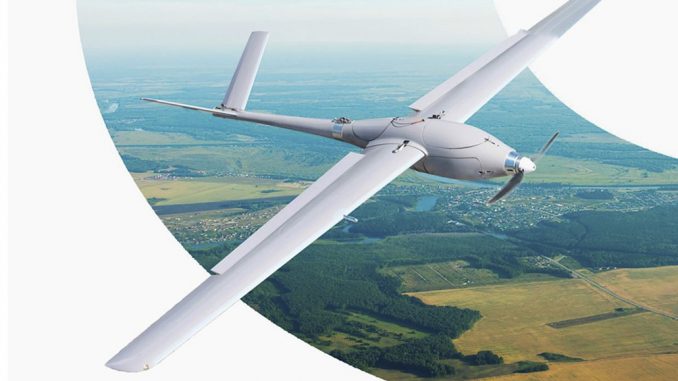
The Ukraine War has served to confirm something that has been widely speculated on in recent years: modern warfare favours defensive over offensive. At least as far as the ground and air domains are concerned, as the spread of anti-tank weapons and the multiplication of sensors over the battlefield in the case of the former, as well as the extension of integrated air defence networks in the case of the latter, make combined arms operations in depth increasingly difficult. This is true except in the case of a number of capabilities that now seem to be available only to the United States, such as Suppression of Enemy Air Defences (SEAD).
This is not the first time in history that something similar has happened. The construction of Italian-style fortifications throughout much of Europe in the XVIth and XVIIth centuries had a similar effect, forcing long and costly sieges. Something similar happened in the First World War with the combination of trenches, artillery and automatic weapons, which degenerated into vicious battles in which profits were measured by hundreds of meters at a cost of tens of thousands of lives or more. In recent months it has been the Russian troops who have been able to feel a similar situation on their skin in a dramatic way. Its armoured columns have fallen one after another, hit by anti-tank weapons, drones and Ukrainian artillery, something that will be discussed later and that could only be corrected by resorting to artillery.
The problem in such cases is that wars end up turning into gigantic confrontations at a tactical level, as any possibility to evolve to the operational level and thus ultimately achieving strategic objectives, is diluted. In the end, conflicts degenerate into wars of attrition in which the economic and industrial capacity, as well as the will of the contenders, decide the outcome. Moreover, generally at a disproportionate cost. Historical examples abound and, as we have stated, we are seeing it in Ukraine where thousands of lives are being lost for ever smaller fractions of land.
No surprise that the Ukrainians keep asking for longer-range weapons. Beyond being able to neutralise Russian artillery, which has the upper hand, they seek to attack their second and third echelons. Hence, preventing new platforms, supplies and soldiers from reaching the front, while seeking to destroy the Russian command posts to disrupt their ability to command and control. Thus the pleas for more and more HIMARS, rocket-assisted guided munitions for tube artillery, or more drones like the Bayraktar TB-2.
The very concept of operational level arose as a result of a situation like the one narrated. It was first theorised -because until then the tactical and strategic levels had hardly been mentioned, although Clausewitz had already shown that there was "something more"- by Soviet and German authors. In the USSR, G. S. Isserson, Tukhachevsky, Varfolomeev, Svechin, Triandafillov and Shaposhnikov were looking for a way out of the stalemate experienced in the First World War. In Germany, for their part, they imbibed from the tradition of Moltke "the Old", who envisaged a level immediately below the strategic level. In addition, young officers such as E. Rommel in his work "Infantry Attacks" already spoke of the events concatenated in depth as keys to dislocate the enemy device. An advance of what would be the "operational art".
The attempts of this period to enlighten new theories are understandable. Since the "race to the sea" of 1914, and despite periods of war of movements on the Eastern Front, trench lines, automatic weapons, artillery and the possibility of moving reserves at high speed thanks to the railway -which made it possible to plug any possible gaps-, had condemned the contenders to immobility and had taken a heavy toll in lives.
For these theorists, the only solution was to attack from behind the front line, disrupting the enemy's logistical apparatus, preventing it from mobilising its reserves or industrial power and eliminating its decision-making centres. It is from this need that the Soviet doctrine of "deep operation" arose. It sought to achieve strategic objectives, but in a limited space - both physical and temporal - by coordinating tactical moves in such a way that the combined effect was more than the sum of its parts.
This is what the Red Army pursued by employing large groupings of tanks and motorised units supplemented by traditional foot infantry to consolidate positions and serve as an anvil. All this under the cover of artillery and attack aviation: to be able to break through enemy lines, spreading out to their rear and directly attacking the nerve centres of their military apparatus until it became a useless and incoherent entity. But also seeking the collapse of the society that was supposed to sustain it. Concepts that were paradoxically better implemented by the Nazi officers than by the Soviet pioneers, most of whom suffered in their flesh the Stalinist purges.
However, none of the above clarifies what we mean when we talk about the operational level, an elusive concept if ever there was one. By elimination and in a very simple way, the operational level is often referred to as the one between tactics and strategy, or between physical and intellectual confrontation. For a positive definition, the operational level of warfare is the level at which campaigns and operations are conducted and sustained to achieve strategic objectives within theatres or areas of operations. It links the tactical use of forces to strategic objectives. The focus at this level is on operational art, which in turn can be defined as the use of military forces to achieve strategic objectives through the design, organisation, coordination, integration, and conduct of campaigns, understood as a related series of operations. military operations aimed at achieving a strategic or operational objective within a given time and space (however enormous they may be). In any case, what must be clear is that the operational level is above tactical confrontation, i.e. contact, be it small skirmishes or large battles, as it seeks to affect the enemy beyond the front line. In this way, success at the operational level is the product of the concatenation of tactical events in depth that end up translating into strategic returns. In other words, operational victories.
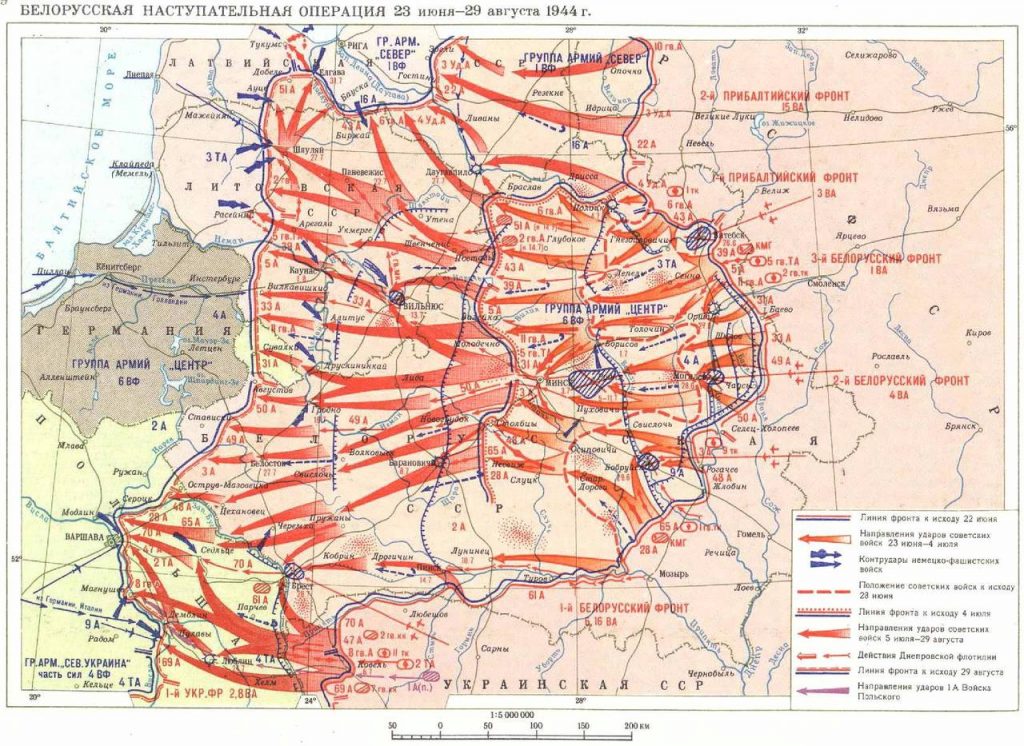
Tools for the operational level
In the previous section we have briefly explained how Soviet theorists anticipated by a decade what we would later come to know, thanks to the Nazis, as Blitzkrieg or lighting war: the concentration of offensive weapons on narrow fronts with the intention of opening gaps in the enemy lines to attack their rear, causing commotion and disorganisation among their ranks and leading them to collapse. However, thinking that launching large concentrations of armoured assets at the enemy is the only way to achieve operational victory is a mistake. In fact, the tools to achieve objectives at this level have mutated over time, thanks to technological advances and to the fact that strategic and political changes did not always make a direct confrontation recommendable.
It is the typical case of the Cold War, where the possibility of an escalation of a direct clash between powers forced them to fight in many cases in what we know as the Gray Zone of the spectrum of conflicts. Hence, the importance of special operations units, which emerged in the 40s, progressively increased. Composed of light infantry, although with significant support in the form of high-tech equipment and also with much deeper and more varied training than that of the line infantry, they could infiltrate the enemy rear by creating chaos, attacking high-value targets, carrying out sabotage, etc.
Another tool designed specifically for this level was theatrical ballistic missiles, which seem to be experiencing a second youth. The “Tochka-Us” that we have seen the Russians and Ukrainians use these months are such weapons, designed to hit the enemy's second and third echelons and affecting their logistics and chain of command. Of course, like many other weapons and tools, they could be used at a tactical or strategic level, depending on the chosen objective, but in principle their logical use goes through the operational level.
In the same way, rocket and tube artillery, as ranges have grown, have moved from playing an eminently tactical to an operational role. Even if some developments are successful, they could, under certain conditions, play a strategic role. Although, as we have explained with regard to the "Tochka-U", this is not new either. When the Germans bombed Paris with the "Paris-Geschütz" they were precisely looking for a strategic effect. In any case, for what concerns us, the important thing is that systems such as HIMARS and M270 -especially with the ATACMS missile- serve to attack concentrations of enemy troops and supplies beyond the front line.
In recent times, cruise missiles and armed drones have also served this type of mission. When Russia launches air-launched cruise missiles on Ukrainian bridges or ammunition depots from its Tu-22M bombers, it tries to prevent Ukraine from being able to continue fighting effectively. The same applies when Ukrainian-operated Turkish Bayraktar TB-2s attack Russian command posts or communications vehicles.
This seems to be the trend, one way or another: avoid direct contact between units on the ground - which implies the risk of a very high human cost and great material losses - in favour of Long range precision weapons and salvo warfare. In this sense, platforms like drones are no more than an imitation of theater bombers or ballistic missiles that have found their own space by maintaining a good relationship between cost, effectiveness and the ability to carry out their functions without exposing lives.
All in all, it is still a segment in continuous development and in which there is still room for new weapon systems specifically designed for the operational level.
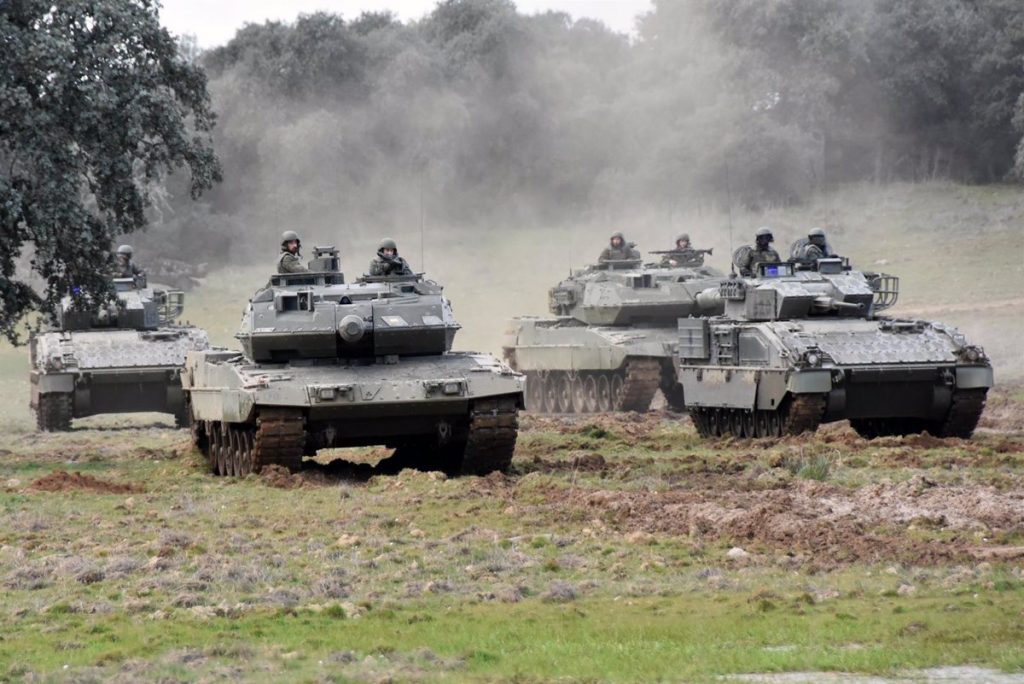
Characteristics of theater loitering munition
This is where loitering munitions come in. They are cheaper than missiles, in some cases reusable, although mostly expendable and with a different legal framework than drones, which simplifies their use. In addition, they are by definition highly accurate weapons -as much as cruise missiles and certainly more than ballistic ones-, relatively inexpensive compared to many missiles and that allow collateral damage to be minimised or the mission to be aborted literally until the last moment. What is more, by being able to operate in a swarm, they can individually assume different functions and increase the chances of reaching the objectives. In addition to attacking, they can provide important ISR data, carry out damage assessment or include carrying out redundant attacks if in the first place the marked target or targets have not been neutralised. Additionally, their small size, much smaller than that of class II and III drones, makes them more difficult to detect, which improves their ability to survive and, thus, to reach the target. Consider that we are evolving towards a scenario in which even states with limited resources are implementing more and more layers of air defence -just think of Morocco and its recent acquisitions. The large platforms are therefore increasingly vulnerable, which is why they tend to disaggregate into smaller ones.
It is obvious that the main characteristic that defines the level of action is the range. For such a system to be used against the second and third echelons, it must have a range of at least 50 kilometers. Ideally, exceeding that number to be able not only to reach the area where the target or targets are believed to be, but also to orbit it for the time necessary to carry out the relevant identification tasks. We are seeing it in the war in Ukraine. The Armed Forces of this country, using HIMARS launchers, are effectively hitting Russian vehicle and supply depots at distances of between 50 and 80 kilometers. Hence, trying to force the same type of paralysis that they achieved in the first phases of the war through a multitude of small tactical actions with operational effects. They are not trivial distances, nor determined at random or forced solely by the range of the M30 rockets used by these MLRS. Quite the contrary, the rockets were designed to meet the requirements of the US Army based on numerous studies and previous experience.
The next requirement would have to do with lethality. Drones have the advantage of being able to carry, depending on their size, a payload that can be impressive (1.700 kg in the case of an MQ-9A Reaper adding a hold and underwing hardpoints). In other words, together, all these weapons add up to a remarkable destructive capacity. In the case of loitering munition, we are talking about an all-in-one with a warhead comparable to some of those that can be launched by a drone such as the Reaper in the case of the Hellfire (8 kg) or the Brimstone (6,3 kg), although far from a GBU-12 Paveway II. Yet two factors come into play here: 1) no platform is at risk (although it is not technically impossible to drop loitering munitions from aircraft to increase range) and; 2) the possibility of using the loitering munition in a group forming swarms. This not only maximises lethality by being able to engage multiple targets at the same time, but also allows the swarm to include some elements with more accurate sensors. For example, to increase reconnaissance capabilities.
Another important aspect is the price. A priori, the marauding ammunition solution, in which each element is both a vector and a weapon, does not seem cheap given its complexity and the need to resort to state of art technologies. Nevertheless, we are talking about prices comparable to those of some anti-tank missiles and without the need for a platform to transport them to the vicinity of the target, thus risking both. In the case of missiles such as the MGM-1250 ATACMS, the price is considerably higher, exceeding one million dollars per unit. Of course, its destructive capacity is far from that of loitering munitions, but precisely for this reason it is not the most suitable means for attacks that require true precision.
Lastly, there is something fundamental that we never tire of stressing: industrial sovereignty. It is impossible for many countries to develop Class III drones and integrate the full range of weaponry they require in a timely, cost-effective manner.The same applies to ATACMS, which involves a millionaire investment and limited stockpiles dependent on third parties. Of course, risking manned aviation for certain missions is less and less logical, especially when no Air Force other than the USAF has SEAD capabilities necessary to act with certain security: we have seen it with Russia over the skies of Ukraine. In this sense, the most rational bet is to develop national systems in which the entire supply and production chain is controlled. This ensures that there is never any dependence on third parties to produce more units, let alone limitations on their use.
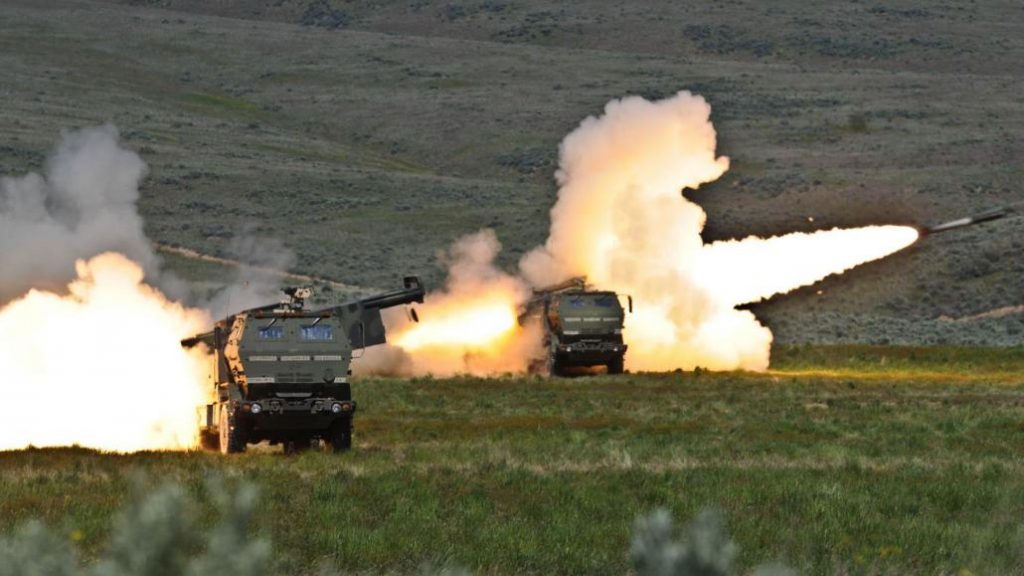
Spain, a peculiar situation
Before explaining what a marauding ammunition could be like made in Spain, where several companies are working on it, it is necessary to talk about the situation in our country, as well as its needs. Spain, as we know, occupies a key geostrategic position that allows it to control various maritime routes -thanks also to the enormous extension of its jurisdictional waters-, in addition to dominating a key crossing point for international maritime trade: the Strait of Gibraltar. This position, which in itself offers great advantages that can be translated into regional influence, has its nemesis in the threats coming from the south. From terrorism to the rearmament that North Africa is experiencing, as a result of the strategic competition between Morocco and Algeria destined to settle who will end up being the regional hegemon.
Regardless of the intentions of one or the other, Spain has the obligation to prepare its defence for an increasingly unstable situation in which the states involved have increasingly modern weapons. What is worse, it is not just a matter of defending the Peninsula or the archipelagos, but also Ceuta, Melilla and the places of sovereignty, which implies a series of imperatives (any reinforcement must be transported by air or by sea, the defenders lack of strategic depth -they cannot exchange space for time going back-, the coverage -be it anti-aircraft, anti-ship or fire support- must be offered from the Peninsula itself by the Artillery weapon and the Air Force or from the Navy ships... ).
For their part, the targets, at least the strategic ones, are far away from Spain. This explains the Navy's determination to have the Tomahawk cruise missile (for the time being we will have to make do with the limited secondary capability of the Harpoons on board the S-80 submarines) and the Air Force's determination to have ALCMs. It is precisely for this reason that Taurus missiles were a long-awaited item for the Air Force until it finally managed to launch a Special Armaments Programme (SAP) for the manufacture and acquisition of 46 units. For the same reason, the Army has a great interest in recovering the rocket artillery, lost years ago with the loss of the Teruel and which, despite multiple attempts and rumors, has not materialised. These are systems that, depending on the ammunition used, can reach ranges of up to 70 kilometers (300 in the case of the ATACMS missile). Therefore, they could provide support from the Peninsula, also enjoying the protection provided by both the Strait, as well as a unique network of EVAs, the CAP missions of the Air Force and the anti-aircraft artillery, with which they would be quasi-invulnerable... until the Harop entered service with Morocco.
Be that as it may, Spain needs systems that allow it to hit beyond the two Autonomous Cities. That is, not on the immediate border with them at a tactical level once a war is being fought, but on the second and third Moroccan echelons. At least in the seconds, since the distances we are talking about are considerable. The most obvious solution is to recover rocket artillery, something we urgently need, as well as to provide extended-range ammunition to the tube artillery. However, in the coming “war of salvos”, many other resources will be needed to attack command posts, supply depots, groups of men and material, anti-aircraft systems, radars, communications vehicles and a thousand other things. This is where loitering munitions come in, of which several models are being developed in Spain, the vast majority of them intended for the tactical level, as is the case of the Instalaza and Swarming Technologies and Solutions (STS) project, called Milvus Micro. or from Arquimea Defense and Security with the QLM-40, concepts very similar to the famous Switchblade 300 from the American AeroVironment.
However, a promising project has recently been launched by UAV Navigation, a company that is part of the Oesía Group. Unlike others, the Madrid-based company's aim is not to market its own loitering munitions, but to offer a suite of systems that will enable other manufacturers to use them as a basis for their own platforms to be transformed into loitering munitions. Moreover, thanks to their versatility, they can be adapted not only to small drones, but also to drones large and capable enough to carry out operational-level attacks.
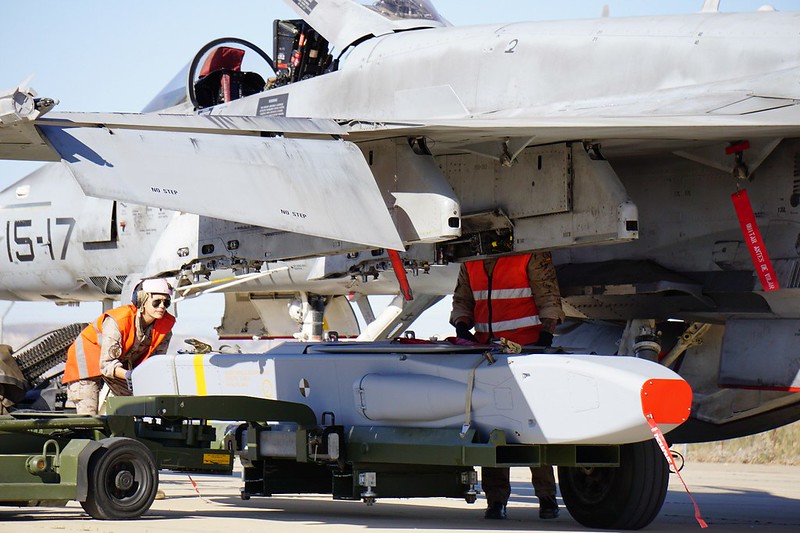
A world of possibilities
UAV Navigation–Oesía Group is a private company within the ecosystem of the Spanish defence industry. Far from dedicating itself to manufacturing platforms or integrating other's products, it is focused on the design and manufacture of very specific components. As well as autopilots and flight control systems for professional unmanned aerial vehicles. In fact, its critical capacity which is at the core of its business, involves comprehensively developing its own Altitude and Heading Reference Systems (AHRS), as well as flight control algorithms and sensor fusion.
This allows the company's systems to adapt to a number of different platforms, customising them according to the needs of each client, many of which are major international companies, some of them Israeli. In other words, some of the critical components and technologies that these companies include in products exported throughout the world are actually Spanish, which is something to take into account. We are talking about a company that since 2004 has commercialised more than 4000 of its systems and that exports 75 percent of what it produces. But most importantly and surprisingly, that dedicates 40% of its turnover to R&D, an amount that virtually no one can match.
Customisation is the key, as the company offers, on a common base consisting of an autopilot, a visual navigation sensor and its own ground control system, the possibility for platform manufacturers to create marauding munitions to attack alone or even in groups, using their own unmanned aircraft designs and regardless of their size. In other words, the company opens the door to the construction of long-range loitering munitions in Spain, as it has designed the core of a future system of this type, which platform manufacturers can adapt to produce very different solutions.
According to the company, they are receiving proposals from different companies to implement their loitering munitions control system on platforms with a maximum take-off weight of more than 20 kg and a range of 100 kilometres. Designs which, due to their size, are already equipped with an optronic system of a certain quality in the visible spectrum to locate and confirm the target and an acceptable warhead. Although the latter is not the responsibility of UAV Navigation-Oesía Group and is left to the choice of the integrator. In any case, and for the purposes of this article, they have laid the groundwork for Spain to be able to count on loitering munitions capable of carrying out attacks at the operational level.
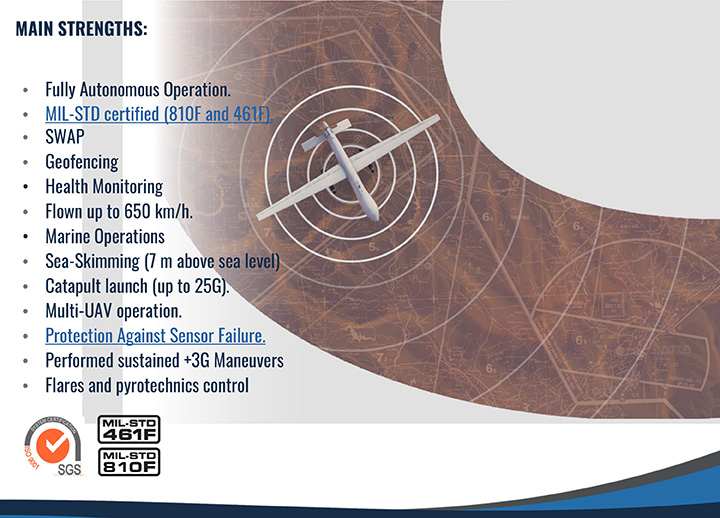
Going back to UAV Navigation–Oesía Group, the company from San Sebastián de los Reyes explains that in theory the system has no range limitations, even if the clients speak of 20, 50 or 100 km. With the inclusion of relays it could be significantly expanded, the same as using SATCOM modems, although this would increase the final price. However, it is possible to include this equipment not in the loitering munition, but in the relay drones. This leads us to another interesting aspect of their project: the possibility of working collaboratively, which is generally known as "swarm" even though in strict terms it is not really that.
In fact, in the Madrid company they reject this term and also give their reasons. Specifically, its engineers explain to us that they do not speak of a swarm, since in mathematical terms it would be designated as a "complex system" made up of several independent parts but intertwined without order, whose links create additional information that is not visible to the external observer. That is, in which there are hidden variables whose ignorance prevents us from analysing the system accurately. Given the existence of such hidden variables, they believe it to be unsafe in the case of weapon systems, as it could lead to unexpected behavior and from the company it is sought that the human element has total control over the whole at all times.
This is how UAV Navigation-Oesía Group talks about multi-platform systems, coordinated systems or systems in formation. The name, as they admit somewhat jokingly, is not as attractive and does not create the same hype as when they talk about "swarms" of drones, but it more accurately reflects what is expected: a system composed of several nodes coordinated in the form of roles and with a clear hierarchy that work cooperatively to achieve the objective of the mission by exchanging information. End point. In this concept, not all network nodes should share the same characteristics, neither because of the size of the platform, nor because of the equipment that each of them embarks on. This means, translated into practice, that you can have systems with greater autonomy (observers and target acquisition) working in a network with loitering munitions which, once the target has been located, would provide the latter with precise data on the target to be hit. As the reader will have deduced by now, this set of systems is not designed to neutralise an armoured vehicle or tank by causing damage to the enemy at the tactical level, but rather to go beyond that.
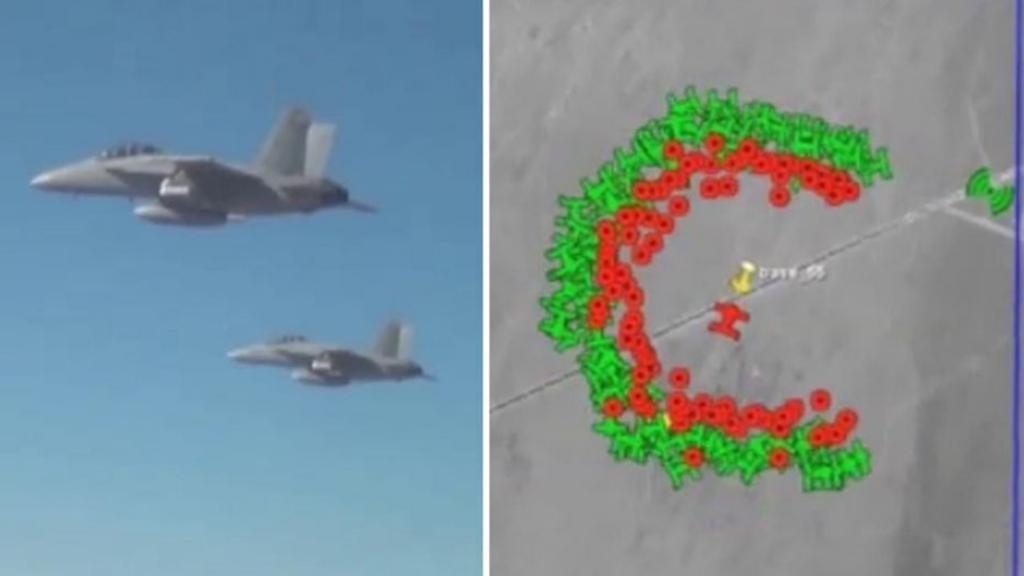
In the company's view, this has several advantages. First, it allows a balance to be struck between the number of expendable platforms (munitions) that make up the array and those that are not. On the other hand, time, reaction times and war loads can be better managed, as it is not necessary to have an absurdly high number of armed platforms flying at once, with the risk of falling over one's own lines or ending up wasted if they eventually have to self-destruct before locating a target to hit.
With regard to the choice of warheads or possible payloads, it will depend both on the company you are working with and on the configuration of the final product you are looking for. Depending on the size of the platforms chosen, but also on the type of mission entrusted, it will be possible to choose one or the other, thanks to the versatility of the UAV Navigation-Oesia Group solution. In our opinion, the most important aspect, at this point, is to find the exact space in which, in terms of lethality, precision, versatility and cost, these loitering munitions can be positioned halfway between artillery and cruise missiles. The company believes that there is sufficient margin and that its system, coupled with the right platforms, can be more cost-effective, lethal and at the same time surgical when attacking fuel depots, command posts, electronic warfare or anti-aircraft systems or communications vehicles. In any case, it is not a replacement, but a complement, allowing the armed forces a wider range of options.
While the time comes to present a fully functional system -flight tests have already been conducted- the company continues to work on increasing autonomy, not in terms of range, but in terms of more intelligent systems capable of making decisions. Rather than human-out-of-the-loop isystems in which the electronic brain makes the attack decision, the aim is to offload the workload and increase the situational awareness of the human in command, who will ultimately decide on the appropriateness of the attack, both for ethical and operational reasons. In addition, they promise that the person in command will have the option to abort the attack until the last moment. This is something that the flight envelope of the loitering munitions in service cannot promise, as their manoeuvrability is rather limited and the point of no return is quite a distance from the target.
Therefore, what UAV Navigation–Oesía Group proposes is not a loitering munition. Conversely, they propose the complete suite of equipment that makes possible autonomous navigation, terminal attack, management of the data flow from the different sensors and the control of all this by means of a ground control station and management software designed to simplify the operator's work as much as possible.
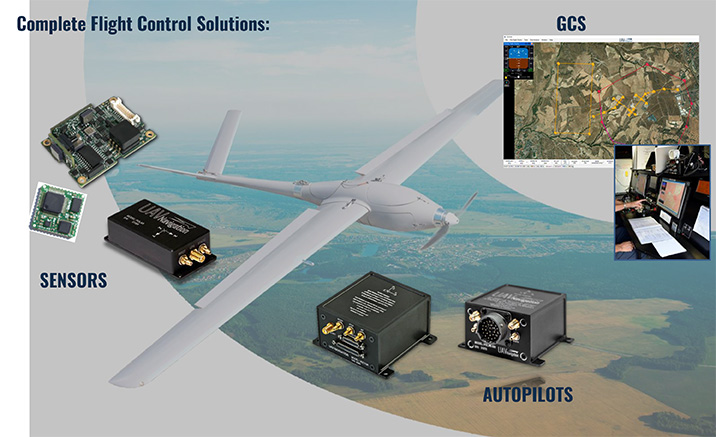
Starting with the autopilot, which has the MIL-STD 810F and 416F certificates, it allows the completely autonomous flight operation of several platforms at the same time, -which carry out their operations both on land and on the sea (it is prepared for the maritime environment)-, maintain stable flight at an altitude of seven meters above the surface -including that of the sea-, speeds of up to 650 km/h, withstand sustained manoeuvres at more than 3G, launch the platform on which it is install at accelerations up to 25G or control the Flares and other countermeasure equipment. In addition, it is redundant equipment, prepared against failures in the sensors and has the possibility of carrying out geofencing. That is, establishing certain areas on the map from which the device or devices cannot leave on their flight. For its part, the visual navigation system, which has a camera that reads the terrain in real time, allows in this case the loitering munition to reach its destination even in conditions in which the GPS signal has been degraded or is non-existent. Lastly, the ground control station together with the company's software allows control of all flight functions, assigning routes, exclusion zones and safe zones, automatic return points if communications are interrupted, monitoring the status of all subsystems etc.
Finally, although we have always referred to the core of the system due to its possibilities, we must clarify that UAV Navigation– Oesía Group is currently collaborating with several companies in order to develop different solutions based on its product. For example, UAV Navigation-Grupo Oesía is a close collaborator of SCR Drones, to whom it has provided guidance, navigation and control solutions for years. Who else knows the least about this last company for being the manufacturer of the aerial targets used by the Armed Forces, although in reality it also designs and produces UGVs and USVs. In recent years they have sold, both in Spain and abroad, more than a thousand whites from the SCRAB, Alba, etc. family. This has provided them with significant experience related to materials, motorisation, aerodynamics or manoeuvrability that very few companies have, and even fewer in our country. In addition to targets, they also make captive drones such as the ASTER-T and RPAS such as the Tucán and the Atlantic I. It is therefore legitimate to think that the combination of capabilities between both companies could result in long-range loitering munitions, of design and production entirely Spanish...
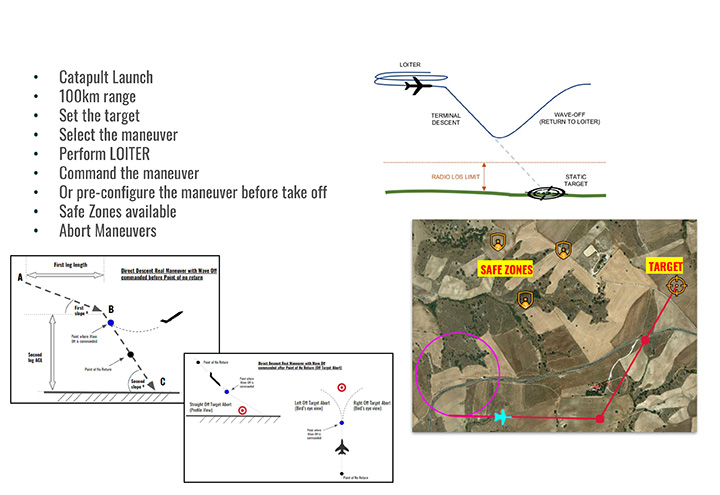
Conclusions
The war in Ukraine is serving to teach us that it is at the operational level that modern wars are won. Given the economic and manufacturing capabilities of the industrialised nations, even the poorest, it is very difficult for a tactical defeat to culminate in an absolute collapse of their armed forces, which inevitably leads to wars of attrition if not the ability to exploit the ruptures. In the case of strategic attacks, unless we are talking about nuclear weapons, what we are seeing in Ukraine also demonstrates that even Russia's ability to hit communications hubs, command posts, government buildings or any kind of sensitive facility we can imagine is not enough to break a determined opponent. In view of the above, armies need to equip themselves with weapon systems capable of hitting the enemy's second and third echelons, so that their deployment is paralysed by lack of supplies.
In Spain's particular case, this is doubly true. We need above all the ability to strike at long range, so that a hypothetical attack on Ceuta and Melilla or any other territory on our southern flank is dislocated before reaching its objectives, thus maximising the options of the garrisons stationed there. This is where long-range loitering munitions come in, which should be added as another option to cruise missiles, tube artillery with extended-range munitions and rocket artillery, another of our major shortcomings.
The proposal of UAV Navigation–Oesía Group offers a solid basis for the development of long-range loitering munitions, entirely designed and produced in Spain and capable of attacking our enemies at the operational level, hence maximising the possibilities of defending ourselves with guarantees against any type of attack.


Be the first to comment